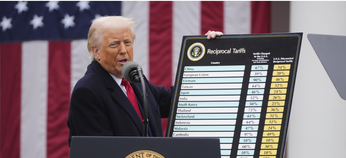
Crisis recedes as troops withdraw, Navalny ends hunger strike
Fears of a geopolitical showdown faded this week as Russian troops withdrew from the Ukrainian border, opposition leader Alexei Navalny said he was stopping his hunger strike and President Vladimir Putin’s annual state-of-the-nation address was notably light on saber-rattling. In the space of just three days tensions that had been building for months appeared to dissipate.
What’s going on?
Putin gave his annual state-of-the-nation address Wednesday and many were expecting a sensation: perhaps a formal recognition of the rebel republics in Eastern Ukraine or an announcement Russia would formally unite with neighboring Belarus. However, there was almost no drama: Putin didn’t even mention Ukraine and devoted barely five minutes to foreign policy. The main topic was social handouts.
The same evening there was an unsanctioned rally in support of Navalny, with people in several cities taking to the streets. In Moscow — in sharp contrast with similar protests in January and February — everything went off peacefully, and there were just 20 arrests.
The following day, Defense Minister Sergei Shoigu announced an end to military training exercises on the Ukrainian border and the return of troops to their bases. The number of Russian soldiers massed near Ukraine had reached menacing levels: somewhere between 80,000 (a Ukrainian estimate) to 100,000 (the figure given by European Union officials).
Navalny’s doctors announced late Thursday that the opposition leader had received a visit from an independent medic and confirmed his condition (after more than three weeks on hunger strike) was life-threatening. Navalny said the next day that he would halt his hunger strike.
The markets responded with significant gains to this positive news. Since Thursday the ruble has risen 2.5 percent against the greenback, strengthening past 75 ruble against the dollar for the first time since the end of March.
Making sense of events
If you look at a timeline of the last couple of months, it suggests that the beginning of the latest round of geopolitical confrontation coincided with the start of Navalny’s prison term (he was sent to a penal colony on Feb. 25) and President Joe Biden’s first significant moves in respect of Russia: imposing sanctions over Navalny’s poisoning on March 2 and describing Putin as a murderer two weeks later. It was also around this time that Russia began moving troops toward its border with Ukraine.
When tensions along the Ukrainian border were at their height in early April, The Bell asked analysts about the possibility of war breaking out – but they all agreed that this was unlikely. Instead, the timeline suggests Russia was attempting to give itself a bargaining chip in negotiations with the West.
March 2 — U.S. imposes sanctions on Russia for the 2020 poisoning of Navalny.
March 5 — Bloomberg reports on preparations for new sanctions to target Russian state debt
March 16 — U.S. intelligence publishes a report on Russian interference in the 2020 presidential election and a CNN source claims sanctions could be imposed within a week
March 17 — Biden answers in the affirmative to a question about whether Putin is a murderer. The ruble starts a fall that will last for three consecutive weeks
March 30 — The Ukrainian military announces Russia is massing troops on its border
April 5 — Putin’s spokesperson Dmitry Peskov says Putin’s state-of-the-nation address will be on April 21. Theories about an escalation in Eastern Ukraine begin to swirl
April 8 — A senior Kremlin official says a military conflict would be “the beginning of the end” for Ukraine
April 13 — Biden calls Putin to discuss Ukraine and Navalny, and suggests a face-to-face meeting
April 15 — the U.S. imposes new sanctions on Russia. They do not pose any serious problem for the economy or the government’s fiscal plans. Biden gives a speech and talks of de-escalation
April 17 — Russia responds to U.S. sanctions. The most serious move is a ‘recommendation’ the U.S. ambassador returns to Washington. Preparations continue for a Putin-Biden summit
April 20 — Independent doctors visit Navalny in prison
April 21 — Putin gives his state-of-the-nation address and barely mentions foreign affairs
April 22 — Shoigu announces Russian troops will leave the Ukrainian border area
April 23 — Navalny ends his hunger strike
Why the world should care
These events look a lot like an effort by the Kremlin to test the new U.S. administration and we will soon find out how effective this has been: on June 2, the White House is due to impose a second round of sanctions. The only positive on the horizon is the upcoming meeting between Putin and Biden, but — at least for the moment — most analysts struggle to see much scope for meaningful progress.



PAID SUBSCRIPTION LAUNCH
From May 1, 2025, The Bell in English will no longer be free
From May 1, 2025, all The Bell’s newsletters and online content will be behind a paywall. We have taken this decision so that The Bell can remain financially independent, and maintain our high standards of journalism and economic expertise






